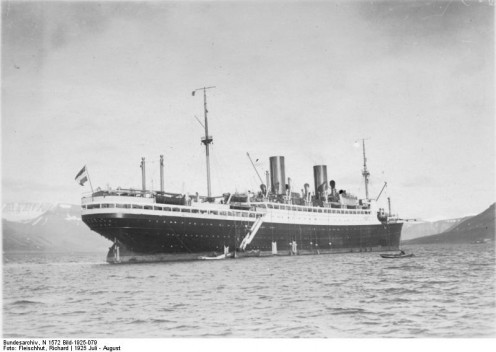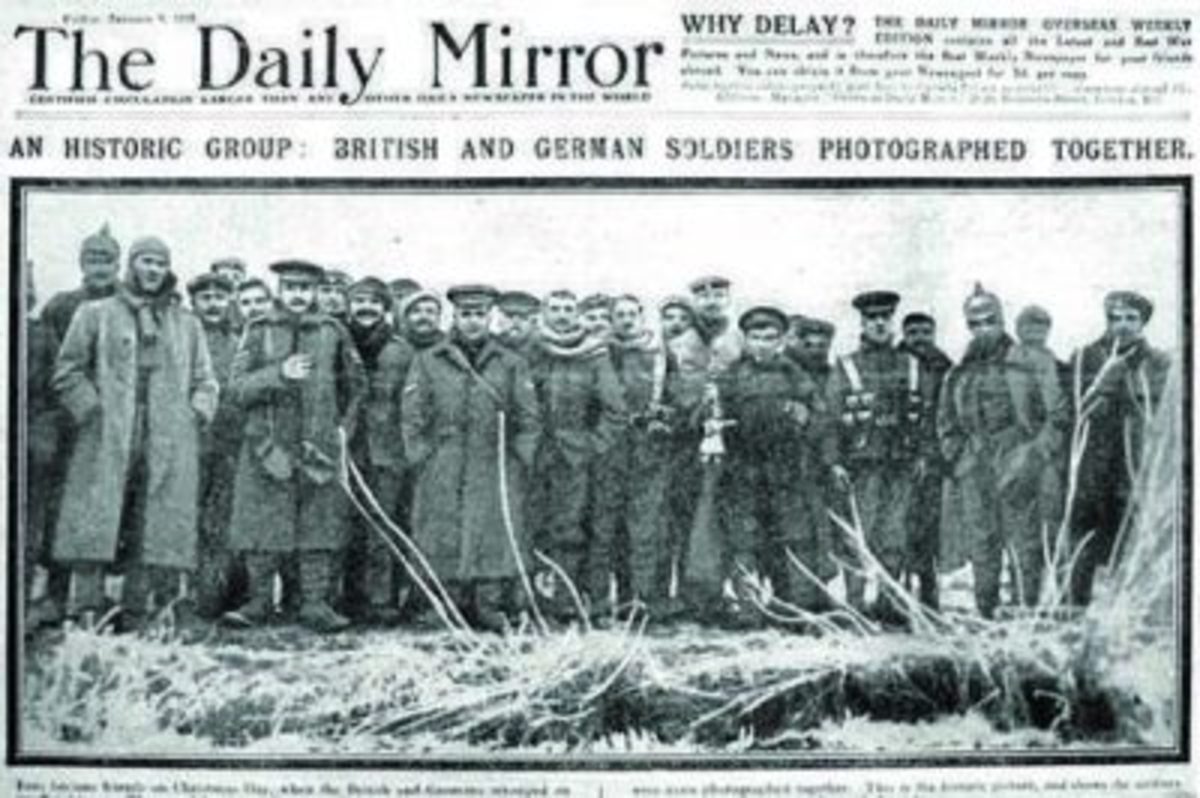- HubPages»
- Education and Science»
- History & Archaeology»
- History of the Modern Era»
- Twentieth Century History
Merchant Navy Disasters

Sea Tragedies of World War 11
In World War 1, the sinking of the Lusitania on May 7, 1915 after being torpedoed by a German Submarine, taking 1198 souls to the bottom of the ocean is well known.
In my last hub on the Merchant Navy in World War II, I talked about the sinking of the Wilhelm Gustloff on January 30, 1945, which took 9343 lives, and the Soviet ‘Armenia,’ which took 6992 lives on November 7, 1941.
Two others were the General Steuben and the Goya both of which were German converted liners.
Ignorance of these marine disasters are lost amongst the terrible atrocities committed against civilians during the War such as in Russia, the Holocaust, the Japanese in China - however the people on these ships were mostly civilians, wounded soldiers, and they too endured immense suffering during the final months of World War II.
One must look at the context of these tragedies to understand what is meant by revenge. The advancing Soviet forces, especially the Red Army, were eager to exact a terrible vengeance on the Germans, and set a vast migration in motion around October, 1944 when the Red Army broke into German East Prussia systematically plundering, murdering and raping those in their path.
Stalin and his generals extolled the troops to do their worst. As for rape and plunder, Stalin said let the troops make their own decisions. So the German people were, clubbed and hacked to death, young girls and women repeatedly raped before being shot or dying of their injuries, and large numbers of refugees simply being run over by tanks.
What drove this insane revenge? Well, in June, 1941 the largest land attack in history ‘operation Barbarossa’ began. The Nazi force used Blitzkrieg to devastate the Russian Army as Hitler had long made it clear that Russians were ‘unterenschen’ sub-human and communist which he hated, he wanted their land and also wanted the Russian Jews exterminated.
Hitler wanted Stalingrad, Leningrad and Moscow hit by three equal forces. However, as the Russians pulled back, they poisoned water supplies, blew up bridges and destroyed building leaving nothing behind them.
This severely hindered the troops which were still there in the iciest winter temperatures of minus 40 Degrees. As the whole thing should have been over before winter, no warm clothing was supplied, and the Germans froze to death in their sleep, the diesel froze, and the food was short.
In Stalingrad, the defeat of an entire 6th German army was probably the turning point of the War, as two-thirds of the German Forces were in Russia and only one-third in Europe which the Allies fought. Winston Churchill said Russia “tore the heart out of the German Army”.
WHOLESALE MURDER
During this time, soldiers from the SS murdered hundreds of thousands of civilians, the slaughter being so great that Himmler thought it disturbing to those doing the killing.
A result of this was the development of the death factories which lead to the Holocaust. It is thought that over 20 million Russians died during the war, around 11.5 million of that number were soldiers. Not all of those deaths were at the hands of the enemy, the enemy was also within in the form of Stalin who, murdered four times more people than Hitler, Pol Pot, Mao or Pinochet combined.
Panic stricken, terrified refugees streamed into the towns along the bay of Danzig, in the light of this, Berlin organised a mass evacuation of more than two million civilians.
Only about 25,000 lives were lost in this evacuation and by this time, the remnants of the German air force were almost powerless to fend off attacks. However, this success is overshadowed by the three terrible ship sinkings.
Hospital Ships
Hospital ships are internationally considered to be off-limits during wartime as set up in the Geneva Convention. In July 1941 the Soviet Government rejected a German request to abide by international law regarding hospital ships, “.... The Soviet government gave notice that it will not recognise and respect German hospital ships according to the Hague Convention.” Accordingly, Soviet submarines sank four of the 13 German hospital ships employed in the Baltic, and 8 of the 21 German transport ships used to carry wounded soldiers.
The first being the Gustloff and eleven days later on February 10 the General Steuben sank with a loss of 3,500 lives. The same Soviet submarine that had sunk the Gustloff now sank the Steuben, which was crammed with 5,000 wounded soldiers and refugees, went down in just seven minutes.
The Goya was torpedoed on April 16, 1945 just three weeks before the end of the war in Europe. The ship left Hela (near Gdansk) for Copenhagen with some 7000 refugees and wounded soldiers as the Soviets were pressing into Berlin and Danzig.
As the convoy neared the treacherous Stolpe Bank, the mine-layer Submarine L-3 torpedoed her twice and the already mauled Goya broke in half, the onrushing sea quickly drowned the screams of the over 7000 refugees and she sank in just four minutes. Only 183 souls survived.
Under terrible conditions, the German navy and merchant marine succeeded in saving many hundreds of thousands of civilians from certain death at Soviet hands.
Notes: Some figures taken from “the Journal of Historical Review”
More on Warships
- The Merchant Navy in World War II
The Allied Merchant Navy in World War II. Who were they, what did they do. Two of the greatest sea tragedies of all time were both vessels in the merchant navy although one was German and the other Russian. - USS IOWA - Historic Battleship passes through the Golden Gate Bridge
One of the last of the great battleships passed under San Fransciso's Golden Gate bridge for the last time - carrying with her 50 years of distinguished service in the Navy from World War ll to date. Read about her colourful history and what she is d









